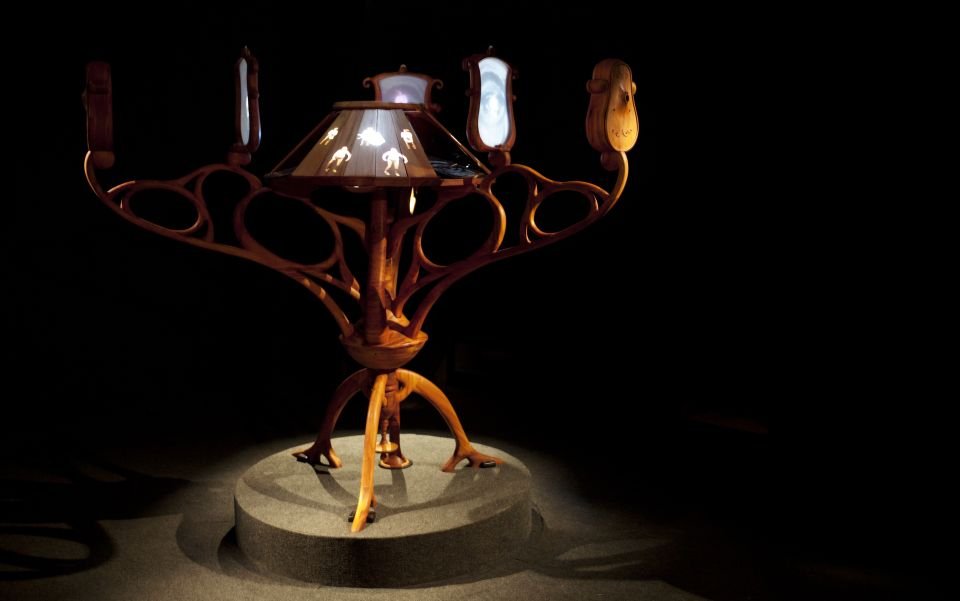12i
Constantly integrating the newest developments in technology into his work, Marcio Ambrosio (Brasil) works on the border between animation and interactive installation art. His 12i installation is based on the principle of the zoetrope, but he combines this pre-film animation technique with contemporary techniques. The visitor is invited to record and star in his own animations and share these in the adjacent room.
Photography is a 19th-century invention that had an enormous influence on the arts as a whole. When the first photograph was developed, it wasn’t clear to which domain this new technique belonged. A photo was taken with a device and required a chemical procedure in order to develop – so it must be a product of technology. But, simultaneously, the photo represented a part of reality; it was an image exactly like the ones illustrators and painters had been making for ages. As such, it provided competition for visual artists. As the quality of the photographs improved, the artist was less restricted to convey reality as it really is and instead could experiment with alternative ways of representing the world.
Another important invention was that of the moving image, or, at least, generating the illusion of a moving image. Thanks to a growing knowledge about optics and our visual faculties, scientist discovered that when the human eye sees a rapid concession of images, our brain interprets these as one, coherent, moving image. This discovery led to a whole range of optical toys, such as the zoetrope for example. The zoetrope consisted of a rotating sphere that displayed a sequence of drawings or photographs showing progressive phases of a motion, thus creating the illusion of movement.
